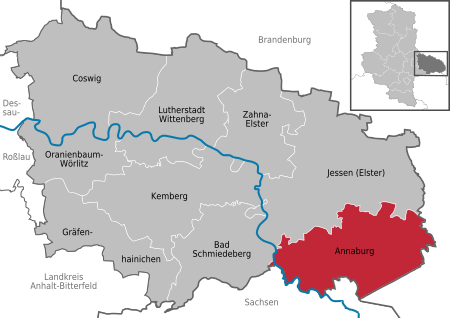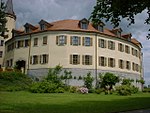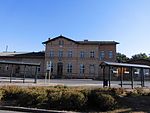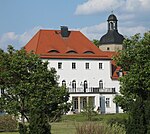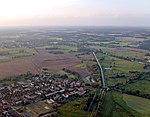Elbe-Elster Land (German: Elbe-Elster-Land), also called the Elbe-Elster region (Elbe-Elster-Gebiet) is a region around the tripoint of the German states of Brandenburg, Saxony-Anhalt and Saxony. It is part of the North German Plain and is named after the two major rivers that have their confluence here: the Elbe and the Black Elster.
In older sources the northwestern parts of the present-day Elbe-Elster Land were called Mezumroka or "land between the rivers". It was part of the Gau Nizizi and almost unpopulated.
The region is first recorded as the "land between the Elbe and Elster" on 14 April 1312, when Frederick the Brave promised 32,000 marks in silver "to be paid within three days" to Margrave Waldemar of Brandenburg as part of the Treaty of Tangermünde following his capture near Hayn. He also promised to cede the "land between the Elbe and Elster", the March of Lusatia and the towns of Hayn and Torgau to Brandenburg.The "land between the Elbe and Elster" was then understood to be a region that covered what later became the Electoral Saxon Ämter or districts of Mühlberg, Liebenwerda, Schweinitz and Lochau.Today the territory of the county of Elbe-Elster which was created in 1993 is marketed and advertised for tourist purposes as the holiday region of Elbe-Elster-Land, but it also includes the western parts of Lower Lusatia around Finsterwalde and the Schraden region.
